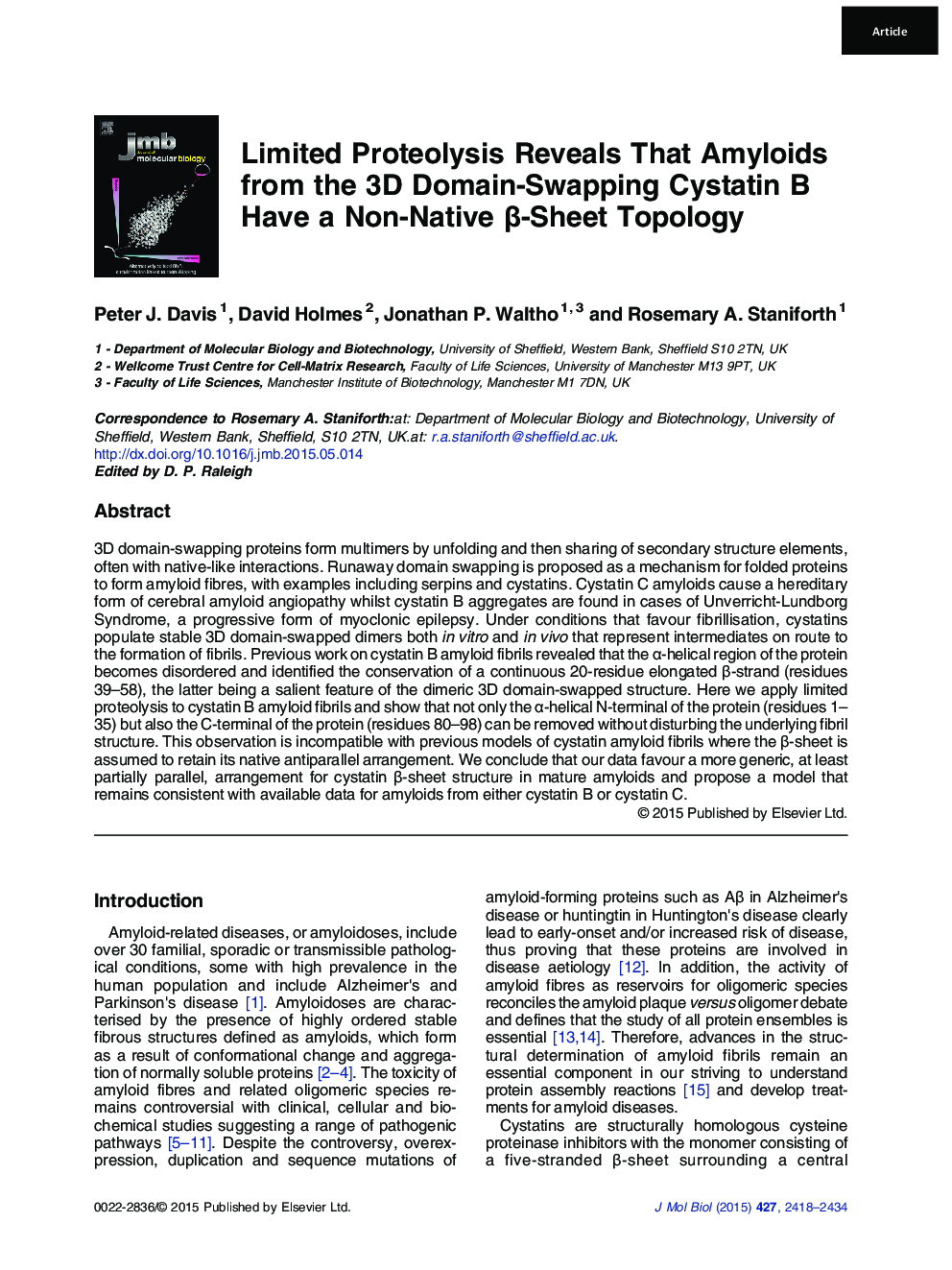| کد مقاله | کد نشریه | سال انتشار | مقاله انگلیسی | نسخه تمام متن |
|---|---|---|---|---|
| 2184327 | 1095830 | 2015 | 17 صفحه PDF | دانلود رایگان |

• The cystatins are thought to form amyloid fibrils via a 3D domain-swapping mechanism.
• Both the N-terminal 35 and the C-terminal 18 residues of cystatin B can be cleaved from fibrils without disturbing their structural integrity.
• Cystatin B fibrils have a non-native topology incompatible with 3D domain swapping.
• Cystatins are a good model for understanding amyloids in general.
3D domain-swapping proteins form multimers by unfolding and then sharing of secondary structure elements, often with native-like interactions. Runaway domain swapping is proposed as a mechanism for folded proteins to form amyloid fibres, with examples including serpins and cystatins. Cystatin C amyloids cause a hereditary form of cerebral amyloid angiopathy whilst cystatin B aggregates are found in cases of Unverricht-Lundborg Syndrome, a progressive form of myoclonic epilepsy. Under conditions that favour fibrillisation, cystatins populate stable 3D domain-swapped dimers both in vitro and in vivo that represent intermediates on route to the formation of fibrils. Previous work on cystatin B amyloid fibrils revealed that the α-helical region of the protein becomes disordered and identified the conservation of a continuous 20-residue elongated β-strand (residues 39–58), the latter being a salient feature of the dimeric 3D domain-swapped structure. Here we apply limited proteolysis to cystatin B amyloid fibrils and show that not only the α-helical N-terminal of the protein (residues 1–35) but also the C-terminal of the protein (residues 80–98) can be removed without disturbing the underlying fibril structure. This observation is incompatible with previous models of cystatin amyloid fibrils where the β-sheet is assumed to retain its native antiparallel arrangement. We conclude that our data favour a more generic, at least partially parallel, arrangement for cystatin β-sheet structure in mature amyloids and propose a model that remains consistent with available data for amyloids from either cystatin B or cystatin C.
Graphical AbstractFigure optionsDownload high-quality image (237 K)Download as PowerPoint slide
Journal: Journal of Molecular Biology - Volume 427, Issue 15, 31 July 2015, Pages 2418–2434